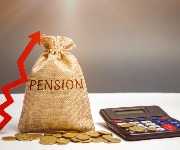EDF Energy cuts gas prices by 5%

EDF Energy has dropped gas prices by 5% as wholesale costs plummet...
The last 15 months have been pretty grim in the energy sector, with every member of the big six group of energy providers upping their tariffs twice. In each case, rising wholesale costs have been blamed.
Well now as wholesale costs drop, price cuts are also starting to materialise.
10% cuts around the corner
Late last week The Times reported that British Gas was considering a moderate cut in energy tariffs before its parent company, Centrica, announced annual results next month. The paper had learnt that executives believed a cut of less than 10% would be affordable.
Comparison site energyhelpline.com followed this leak by announcing forecasts of price cuts of up to 10% in the coming months. This would reduce the average annual dual fuel bill by as much as £135.
Figures from Ofgem show that wholesale gas prices are down 32% from their September level. And as wholesale costs make up 47% of what you pay, a drop of this level should translate into a 15% tariff cut.
Likewise, Ofgem numbers show that wholesale electricity costs are down by 27% from their summer peak – giving a theoretical cut in bills of 11%.
These predictions are bolstered by a recent 5% price cut from smaller provider OVO and a pledge from Co-op Energy to reduce prices by 3% from February.
First off the mark
When one of the big six cuts prices, the rest tend to quickly follow, so brace yourself for a PR battle.
The first to move has been EDF Energy, which today announced it was cutting gas prices by 5% from the 7th February. However, electricity bills (which rose by 4.5% back in November) remain untouched.
The provider highlighted the fall in wholesale costs of more than 9% since it upped its tariffs last year, noting its customers expected "fair, clear and transparent prices".
Why cost savings don't always get passed on
Figures from Consumer Focus dating back to 2007 show that while retail energy prices rise with wholesale costs, the two rarely fall together.
Part of the problem is that utility companies do not buy up wholesale energy as they supply it - instead much of it is bought in advance. The official explanation for doing this is that it enables market volatility to be ‘smoothed out’, although it’s hard not to imagine profit maximisation is another key reason.
Advance buying can occasionally allow providers to stave off price rises. However it also gives them an excuse to not pass on immediate wholesale cost falls. The multi-national nature of energy companies also adds to the complexity, as no one knows exactly where profits are being made.
So with possible cost cuts around the corner, should households on pricey tariffs hold on or switch now?
Switch or wait
Despite forecasts of further price drops, energyhelpline.com is still advising customers to compare rates and assess possible savings.
If you haven’t switched tariffs in a while, chances are you are on the standard and most expensive rate. Changing onto a fixed or online tariff could cut your bills immediately. Yes, rates could continue to drop in the coming months. But if you do decide to stick on a pricey deal and wait around for them, you could see the excess you’re paying now outweigh any future savings.
So with that in mind, here are the current cheapest energy tariffs:
|
Tariff |
Average cost* |
Average saving** |
Fixed or capped? |
|
£1,030 |
£315 |
No |
|
|
£1,061 |
£284 |
Fixed for 12 months |
|
|
£1,078 |
£267 |
Fixed until 8 April 2013 |
|
|
£1,085 |
£260 |
No |
|
|
£1,095 |
£250 |
Fixed until April 2013 |
|
|
£1,106 |
£239 |
No |
|
|
£1,115 |
£230 |
Fixed for 12 months (100% green energy) |
|
|
£1,123 |
£222 |
Capped until February 2013 |
|
|
Npower Sign Online 25 (+ £25 love2shop/fuel voucher) |
£1,135 |
£210 |
No |
|
£1,150 |
£195 |
No |
Source: energyhelpline.com
All tariffs are available through the lovemoney.com energy centre.
As you can see, there’s still as much as £315 to be saved by switching onto the market-leading tariff.
The best deal currently around is the online iSave tariff from first:utility. However with the top fixed tariff just £31 pricier on average, it may be worth foregoing the cheapest deal for the peace of mind of a year-long, set-price rate.
Your take
Is a 5% cut in gas prices enough? Do you think energy prices will keep coming down?
Have your say using the comment box below.
* All calculations are for an average usage duel fuel household paying by monthly direct debit. Average usage as defined by OFGEM is 16,500 kWh pa of gas and 3,300 kWh pa of electricity.
** Against a typical bill of £1,345 per year (source: Ofgem).
More: Compare energy tariffs with lovemoney.com | Four big gas and electricity scams to avoid this winter | Gas costs, not green measures, to blame for energy prices
Most Recent
Comments
-
Government cares little about the private customer , they are more concerned about donations to party funds- see the honours list if you doubt that. So the Ofgem take a very easy line with energy companies otherwise the governmnet may kick them and reduce their big bonuses. So you are all sown up like kippers, just like with transport and any other privatised company. Personally, I have been with OVO since they started and it is time to renew my 12 month contract. I cannot see a better supplier out there at the moment either.
REPORT This comment has been reported. -
The way to beat these Energy Giants is to is to move to a cheaper Company, its simple. They would soon reduce their prices if they started loosing customers in 1000s. There are cheaper Companies out there , are we a nation of stupid people who find it easier just to pay up? The BIG 6 think we are..... Lets look at their yearly profits when they are published and kick these Ba....ds in the arse as they are doing to us.
REPORT This comment has been reported. -
5%? Whoopy do. Fact is they're a PLC with shareholders who expect increased returns every year, standing still is not an option. So we pay through the nose for the Iron Lady's flogging off of the energy companies in the 80's. To increase prices by 15%, then reduce them by 5, is still a 10% rise. And note it's not coming in for another month yet. And only on gas. I think if you assume all energy companies are thieving bstds you won't go far wrong.
REPORT This comment has been reported.
Do you want to comment on this article? You need to be signed in for this feature









11 January 2012